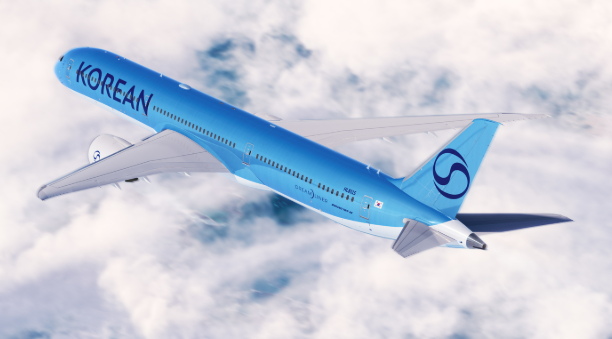 Download
Download
Korean Air to cram extra — smaller — seat in each economy row

Korea JoongAng
Daily - Korean Air passengers flying economy on revamped Boeing 777-300ER jets
starting September will find an extra seat in each row — and one less inch — as
the airline adds a new premium economy cabin.
The change increases each row from nine seats to 10, reducing seat width from
18.1 inches to 17.1 inches.
Korean Air
announced on Aug. 5 that it would invest 300 billion won ($210 million) to
upgrade 11 Boeing 777-300ER jets and add premium economy seats.
The existing
layout of eight first-class seats, 56 business-class seats and 227
economy-class seats — 291 in total — will be replaced with 40 business-class,
40 premium economy and 248 economy seats, for a total of 328.
The addition
of 40 premium economy seats and 21 more economy seats means the cabin will be
more densely packed, with each seat 1 inch narrower.
The airline
said the move reflects global trends rather than a purely profit-driven
decision.
“Many global
carriers operating the same aircraft type already use this seat arrangement,” a
Korean Air spokesperson said.
Of 25 major
global airlines with the 777-300ER, 18 use the 3-4-3 economy configuration
while seven keep the 3-3-3 layout, according to Korean Air.
The airline
added that the new seats are slimmer, giving passengers a perception of more
space.
Concerns over
shrinking economy seats have been a long-running issue worldwide, with some
passenger advocacy groups calling for minimum seat-size regulations.
Several
international airlines adopted 17-inch-wide seats before Korean Air, prompting
pushback from travelers.
In 2022,
U.S.-based FlyersRights petitioned the Federal Aviation Administration to set
minimum seat dimensions, arguing that smaller seats could hinder emergency
evacuations, increase the risk of deep vein thrombosis and encroach on personal
space.
The case went
to court, but in 2023, a U.S. judge ruled that mandatory size rules were not
necessary. The judge noted that while many seats were uncomfortably narrow,
there was no conclusive proof they were dangerously small.
Some experts
warn that average body sizes have increased while seat dimensions have moved in
the opposite direction.
A December
2024 study by Lee Hwa-yeon, a professor of aviation services at Honam
University, found that between 1979 and 2021, the average height and waist
circumference of Korean men and women grew.
Men’s waists
expanded by 7.3 to 12.9 centimeters (2.8 to 5 inches), and women’s by 3.6 to
5.6 centimeters, while average height increased by up to 9.3 centimeters for
men and 8.1 centimeters for women.
“Narrower
seats that increase cabin density not only cause discomfort but could also
raise safety risks, such as more severe cases of economy-class syndrome,” Lee
said in a phone interview with the JoongAng Ilbo, referring to clotting in the
legs occasionally seen on flights.
Some consumers
fear that with the merger of Korean Air and Asiana Airlines, which will leave
only one full-service carrier in Korea, the 17-inch seat width could become
standard.
The Fair Trade
Commission in February 2022 approved the merger on the condition that the
carriers return the traffic rights to 40 routes for 10 years after the deal and
maintain service quality, including seat pitch. Industry observers expect the
reconfigured 777-300ERs will avoid those 40 routes.
“We will fully
comply with the corrective measures ordered by the Fair Trade Commission,” a
Korean Air spokesperson said.